Proven Spanish PPC Keyword Research & Google Ads Targeting Tips
To start, here are key things to consider about Spanish PPC:
- Google Ads shows ads based on a user’s browser preference. Those using Google in English may see different ads than those whose web browsers are set to Spanish. This can be advantageous or disastrous, depending on your target market’s behavior.
- Keyword research enters a new realm with Spanish PPC. You’ll need to evaluate keyword volume and difficulty in relation to a consumer’s geography and preferred web browser language.
- In many cases, there is no way to compensate for local knowledge. Those using broad or generalized methods in advertising to Hispanics waste marketing dollars and leave much more on the table. When it comes to Spanish PPC, it’s best to partner with those who understand the nuances of language as well as local cultures.
Now, let’s take a closer look at actual cases and instances.
Use the following Spanish PPC tips to enhance your future Hispanic paid advertising and marketing campaigns.
Troublesome Issues with Google Ads Language Targeting
Missed Opportunity
Google Ads considers a browser’s set language preference, which can result in many missed PPC opportunities.
It may appear counterintuitive to consider using English ads to target Spanish speakers. However, in some cases, what’s counterintuitive can lead to PPC dollars.
In a recent campaign I worked on, potential consumers were not seeing ads because the campaign did not target consumers with their browsers set to English – even some Spanish keywords did not trigger campaign ads!
In some cases, Hispanic consumers will make a search in English or use their web browser in English because many American keywords don’t have a translatable word in Spanish.
One of our software keyword campaigns had 600 keywords.
Only 7% of the original English keywords had an equivalent keyword in Spanish!
Aleyda Solis mentions a similar incident happening with a Dutch-to-English campaign when she recently spoke with Yoast about international SEO.
Be flexible with language targeting.
Consider some Hispanic consumers outside the U.S. use web browsers in English.
Wasteful Words
In some cases, English-based campaign keywords are irrelevant when targeting consumers using Spanish-based browsers.
In one campaign, we saw that keywords that were more investigative or informational in nature were less relevant.
Keywords related to transactional or commercial intent became the sole focus.
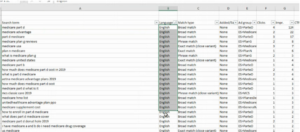
The whole section of keywords shown above was cut from the Spanish PPC campaign. This proved to be more effective.
Don’t assume you need to use as many keywords in your Hispanic PPC campaign.
Many times, you need to use broader variations.
Lopsided Multilingual Performance
In a particular segment of a Spanish PPC campaign, English-based searches triggered 24% of ads and Spanish keywords triggered 75% of the campaign ads.
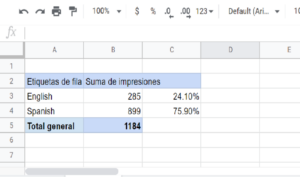
It was a misstep to include so many English-based words in the Spanish campaign, especially when the campaign did not target those using browsers set to English.
In some cases, you may have to rethink your Spanish PPC strategy or comprise an alternative set of keywords.
Furthermore, after English-to-Spanish translation, you may find that a majority of the exact-match terms are brand-related.
Partner with a marketing team that knows the Spanish language as well as the culture in Spain, throughout Latin America, etc.
A Keyword With Multiple Aliases
Contrasting Value
Let’s consider the keyword: “network performance monitor.”
Here are some quick stats on the keyword in America:
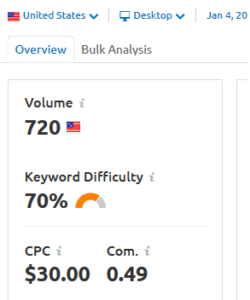
And, here’s what the keyword data looks like for Mexico:
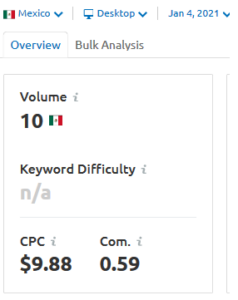
This is what data estimates look like when targeting a consumer in Mexico with their browser set to Spanish (results).
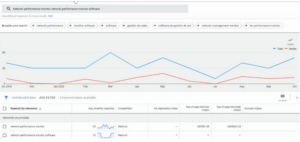
There’s low volume with medium competition.
Here’s data related to targeting a consumer in Mexico but using their browser in English.
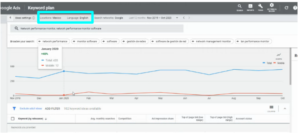
The search volume is significantly higher!
Consider all of the possibilities in leveraging your keyword in English as well as in Spanish.
Be comprehensive with Hispanic keyword research.
Consider how a given keyword’s stats may fluctuate depending on a consumer’s location as well as their web browser preference.
Hidden Options
Want to see something interesting?
Let’s take a look at keyword variation options when we set the planner to target a Mexican consumer, using an English-based browser.
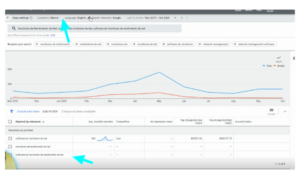
Few options exist for keyword variation.
But, what about if you switch the browser’s language to Spanish?
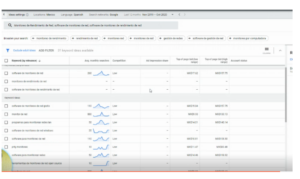
We get a lot more options for keyword variations!
The decreased competition resulted in lower CPCs for Spanish keywords. This helps develop new ad groups.
Use Keyword Planner to further define your Hispanic PPC campaign.
You may find it useful to discard English-based words while taking notice of suggested Spanish terms.
Lengthy Variations
In a mini-experiment, our company analyzed about 100 keywords related to a client campaign.
The Spanish translation keywords were about 19% longer (in character length) compared to English variations.
This happens a lot throughout the software industry.

Consider how a Spanish-translated keyword looks on the page, especially where character length is important.
High Income
It can be highly profitable to consider household income when targeting Hispanic countries.
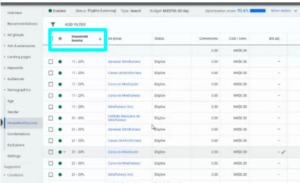
Wealth distribution is drastically varied throughout LATAM. Based on the degree of inequality in wealth distribution measured by the Gini coefficient, Brazil was the most unequal country in Latin America as of 2017.
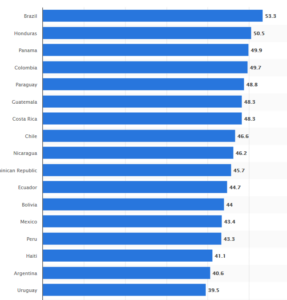
The Gini coefficient measures distribution of income (0 represents absolute equality and 100 equals the highest degree of inequality).
Given fluctuations in Latin America’s state of affairs, it’s beneficial to further define particular elements, such as household income, when comprising a Hispanic PPC campaign.
Make Friends With Localized Content
Questionable Google Translations
Google Translate can be incredibly useful, but it can also be misleading.
Let’s consider selling piggy banks to Hispanic consumers.
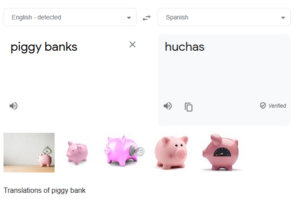
That was easy enough. Now, as part of my Spanish campaign, I will use keyword variations of “huchas.”

The word, “cepillo” is suggested, but that translates to “brush.”
“Ahorros” translates to “savings.”
Lastly, “economias” is suggested, but that translates to “economy.”
Hence, this is an ineffective and misleading way to go about keyword research for PPC and content marketing campaigns.
If you’re not a native to a specific country, then you’re going to spend a lot of time aligning the best keywords for your campaign.
Even those speaking the same language may use different words to make a search.
Let’s continue with “hucha.”
If we used that term to target Spanish speakers around the world, we would be hugely successful in Spain… but not so much in other Hispanic countries.
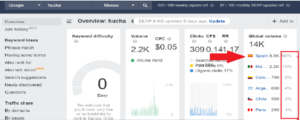
Per keyword planner, search volume for “hucha” is high in Spain and low in Mexico. Furthermore, if we take a look at Mexico, we see the term “hucha” is used in limited parts of the country.
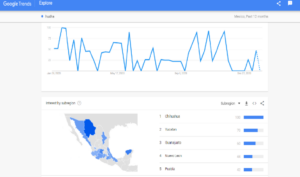
However, it’s much more popular (and profitable regarding Hispanic PPC) in Spain.
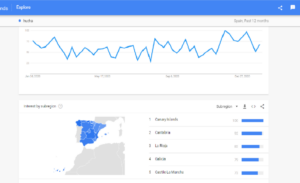
There’s no general way to exact Hispanic PPC.
Success relies on the localization of content and understanding of local culture.
Tailored Mistakes
Even well-intentioned ad attempts can fall flat with Hispanic consumers. In a dated campaign, H&M’s Mexican website did well in helping users calculate pesos to dollars, but misfired in sounding local.
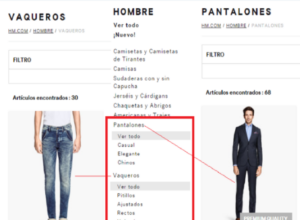
They use “vaqueros.” This does not resonate with buyers in Mexico, who would use “jeans” or “mezclilla.”
Also, local brands would use a different category system, keeping it simple with “formal” and “casual.”
Be sure that keywords, PPC ads, landing pages, and dedicated sites relate well in relation to specific Hispanic countries, regions, and locales.


Customer Journeys
Understanding the customer journey is among the vital PPC trends for 2021.
For example, how should one go about finding the data to inform a customer’s journey for PPC marketing in Latin America?
Brazil and Mexico are the larger ecommerce markets, yet ecommerce and mobile use in Peru, Argentina, and Colombia have grown significantly in the past decade.
In fact, as of 2018, 58% of those in Peru owned a smartphone—up dramatically from 8% in 2012.
Therefore, Hispanic PPC campaigns need to focus on individual countries and rising trends.
Brands that capitalize early on in emerging markets will have a huge advantage over competitors who are late to the party.
Speaking of journeys, Burger King capitalized on an element of Mexico City culture.
Using infamous Mexico City traffic to its advantage, BK used a mixture of real-time billboard updates, GPS tracking, and couriers on motorcycles to combat traffic-jam hunger.
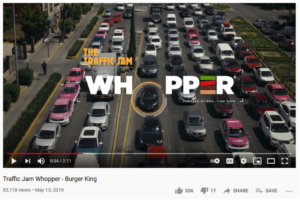
This shows a deep understanding of the local market, its pain points, and the inherent opportunities.
When it comes to the customer journey and sales cycle, view each Hispanic country as its own microcosm to explore.
PPC efforts may prove effective in one locality or region and fail in others.
Spend time understanding local culture and dialect to properly align ads with the customer journey.
10 Key Takeaways for Your Spanish PPC Campaigns
Spanish PPC begins with choosing the right keywords.
But after that, it’s a matter of knowing how to use them.
Let’s review 10 key Spanish PPC insights from above:
- Identify the role of language targeting within your strategy and its impact on campaign structure. Don’t dismiss the notion of targeting consumers in English and Spanish.
- Limit the number of ad groups and keywords at the onset of a Spanish PPC campaign. Managing a limited number allows you to pinpoint quick wins and easier translations.
- Evaluate the viability of your Spanish PPC campaign by translating keywords first, identifying inexistent ones, and conducting keyword research in each targeted language.
- Research your keywords bilingually to identify volume variations. If you are targeting Latin America, do it per country. Think local versus using a generalized approach.
- You may benefit from spending time with Keyword Planner and seeing whether it’s more profitable from an ad-spend perspective to leverage more Spanish keywords.
- Consider how keyword translations look on the page and vary in character length for page titles, campaign slogans, and dedicated websites, .
- What do keywords tell you about the status of the market you are targeting? Consider household income in relation to the economy of a given country.
- Do not rely on basic translation tools for English-to-Spanish PPC efforts. It’s best to partner with those experienced with individual cultures and language preferences.
- Reassess your landing pages and web copy. Are you telling a story that resonates with the targeted audience?
- Overall, how does your Spanish PPC campaign fit in with a broader attempt to target Hispanic consumers? Be sure PPC capitalizes on consumer behavior and seamlessly fits-in with their buyer journey.
More Resources:
- Why PPC Marketers Should Fall in Love with Broad Match
- 15 Ways to Optimize a Paid Search Campaign
- PPC 101: A Complete Guide to PPC Marketing Basics
Image Credits
All screenshots taken by author, January 2021
AI
Exploring the Evolution of Language Translation: A Comparative Analysis of AI Chatbots and Google Translate
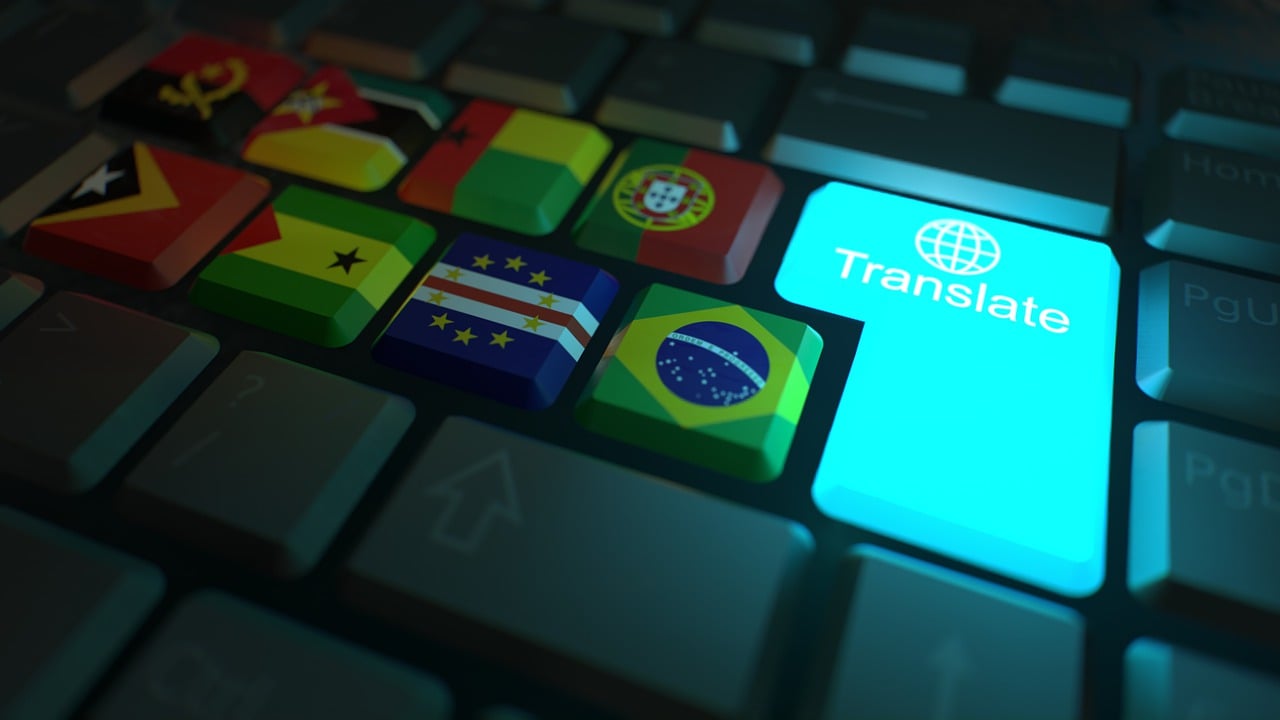
According to an article on PCMag, while Google Translate makes translating sentences into over 100 languages easy, regular users acknowledge that there’s still room for improvement.
In theory, large language models (LLMs) such as ChatGPT are expected to bring about a new era in language translation. These models consume vast amounts of text-based training data and real-time feedback from users worldwide, enabling them to quickly learn to generate coherent, human-like sentences in a wide range of languages.
However, despite the anticipation that ChatGPT would revolutionize translation, previous experiences have shown that such expectations are often inaccurate, posing challenges for translation accuracy. To put these claims to the test, PCMag conducted a blind test, asking fluent speakers of eight non-English languages to evaluate the translation results from various AI services.
The test compared ChatGPT (both the free and paid versions) to Google Translate, as well as to other competing chatbots such as Microsoft Copilot and Google Gemini. The evaluation involved comparing the translation quality for two test paragraphs across different languages, including Polish, French, Korean, Spanish, Arabic, Tagalog, and Amharic.
In the first test conducted in June 2023, participants consistently favored AI chatbots over Google Translate. ChatGPT, Google Bard (now Gemini), and Microsoft Bing outperformed Google Translate, with ChatGPT receiving the highest praise. ChatGPT demonstrated superior performance in converting colloquialisms, while Google Translate often provided literal translations that lacked cultural nuance.
For instance, ChatGPT accurately translated colloquial expressions like “blow off steam,” whereas Google Translate produced more literal translations that failed to resonate across cultures. Participants appreciated ChatGPT’s ability to maintain consistent levels of formality and its consideration of gender options in translations.
The success of AI chatbots like ChatGPT can be attributed to reinforcement learning with human feedback (RLHF), which allows these models to learn from human preferences and produce culturally appropriate translations, particularly for non-native speakers. However, it’s essential to note that while AI chatbots outperformed Google Translate, they still had limitations and occasional inaccuracies.
In a subsequent test, PCMag evaluated different versions of ChatGPT, including the free and paid versions, as well as language-specific AI agents from OpenAI’s GPTStore. The paid version of ChatGPT, known as ChatGPT Plus, consistently delivered the best translations across various languages. However, Google Translate also showed improvement, performing surprisingly well compared to previous tests.
Overall, while ChatGPT Plus emerged as the preferred choice for translation, Google Translate demonstrated notable improvement, challenging the notion that AI chatbots are always superior to traditional translation tools.
Source: https://www.pcmag.com/articles/google-translate-vs-chatgpt-which-is-the-best-language-translator
Google Implements Stricter Guidelines for Mass Email Senders to Gmail Users
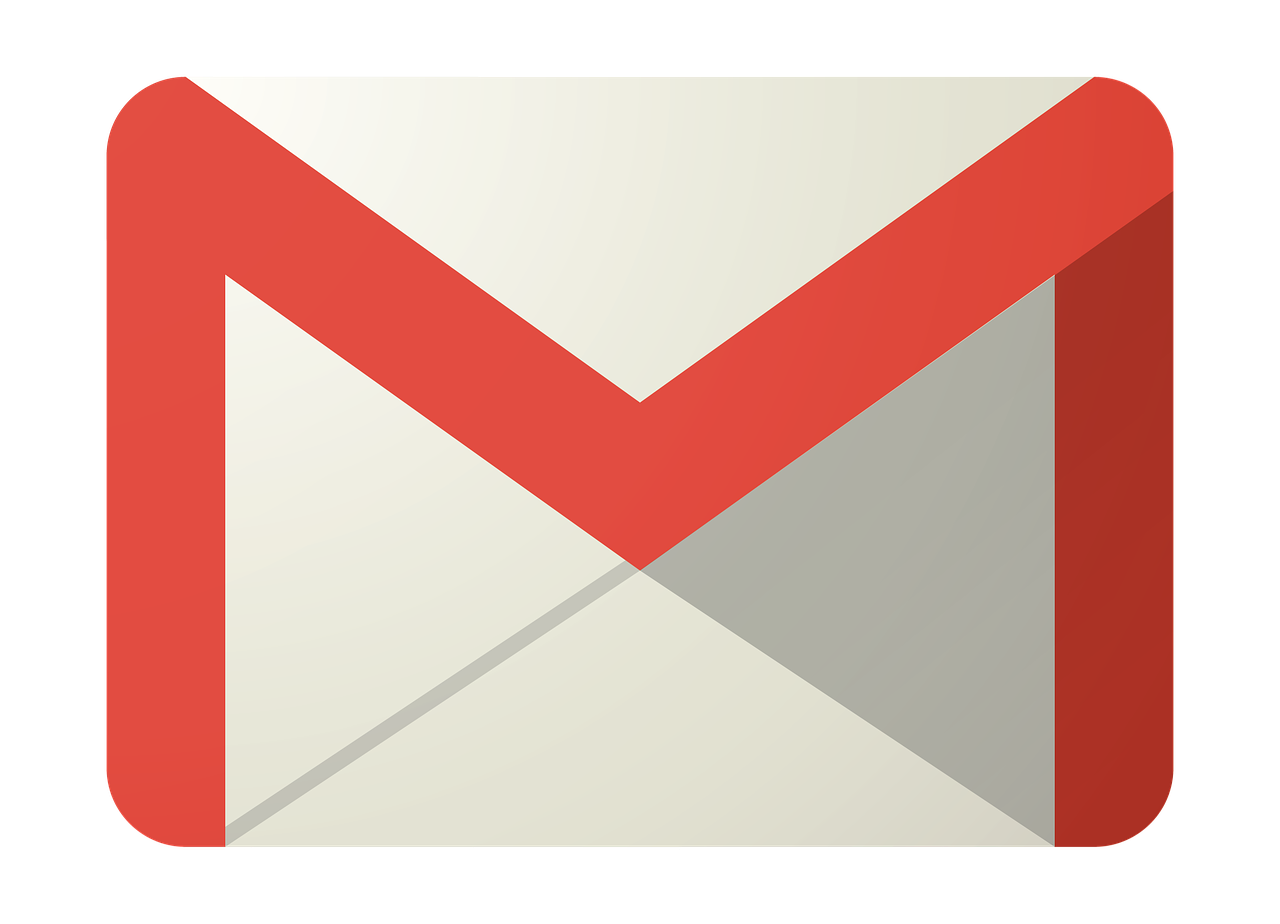
Beginning in April, Gmail senders bombarding users with unwanted mass emails will encounter a surge in message rejections unless they comply with the freshly minted Gmail email sender protocols, Google cautions.
Fresh Guidelines for Dispatching Mass Emails to Gmail Inboxes In an elucidative piece featured on Forbes, it was highlighted that novel regulations are being ushered in to shield Gmail users from the deluge of unsolicited mass emails. Initially, there were reports surfacing about certain marketers receiving error notifications pertaining to messages dispatched to Gmail accounts. Nonetheless, a Google representative clarified that these specific errors, denoted as 550-5.7.56, weren’t novel but rather stemmed from existing authentication prerequisites.
Moreover, Google has verified that commencing from April, they will initiate “the rejection of a portion of non-compliant email traffic, progressively escalating the rejection rate over time.” Google elaborates that, for instance, if 75% of the traffic adheres to the new email sender authentication criteria, then a portion of the remaining non-conforming 25% will face rejection. The exact proportion remains undisclosed. Google does assert that the implementation of the new regulations will be executed in a “step-by-step fashion.”
This cautious and methodical strategy seems to have already kicked off, with transient errors affecting a “fraction of their non-compliant email traffic” coming into play this month. Additionally, Google stipulates that bulk senders will be granted until June 1 to integrate “one-click unsubscribe” in all commercial or promotional correspondence.
Exclusively Personal Gmail Accounts Subject to Rejection These alterations exclusively affect bulk emails dispatched to personal Gmail accounts. Entities sending out mass emails, specifically those transmitting a minimum of 5,000 messages daily to Gmail accounts, will be mandated to authenticate outgoing emails and “refrain from dispatching unsolicited emails.” The 5,000 message threshold is tabulated based on emails transmitted from the same principal domain, irrespective of the employment of subdomains. Once the threshold is met, the domain is categorized as a permanent bulk sender.
These guidelines do not extend to communications directed at Google Workspace accounts, although all senders, including those utilizing Google Workspace, are required to adhere to the updated criteria.
Augmented Security and Enhanced Oversight for Gmail Users A Google spokesperson emphasized that these requisites are being rolled out to “fortify sender-side security and augment user control over inbox contents even further.” For the recipient, this translates to heightened trust in the authenticity of the email sender, thus mitigating the risk of falling prey to phishing attempts, a tactic frequently exploited by malevolent entities capitalizing on authentication vulnerabilities. “If anything,” the spokesperson concludes, “meeting these stipulations should facilitate senders in reaching their intended recipients more efficiently, with reduced risks of spoofing and hijacking by malicious actors.”
Google’s Next-Gen AI Chatbot, Gemini, Faces Delays: What to Expect When It Finally Launches
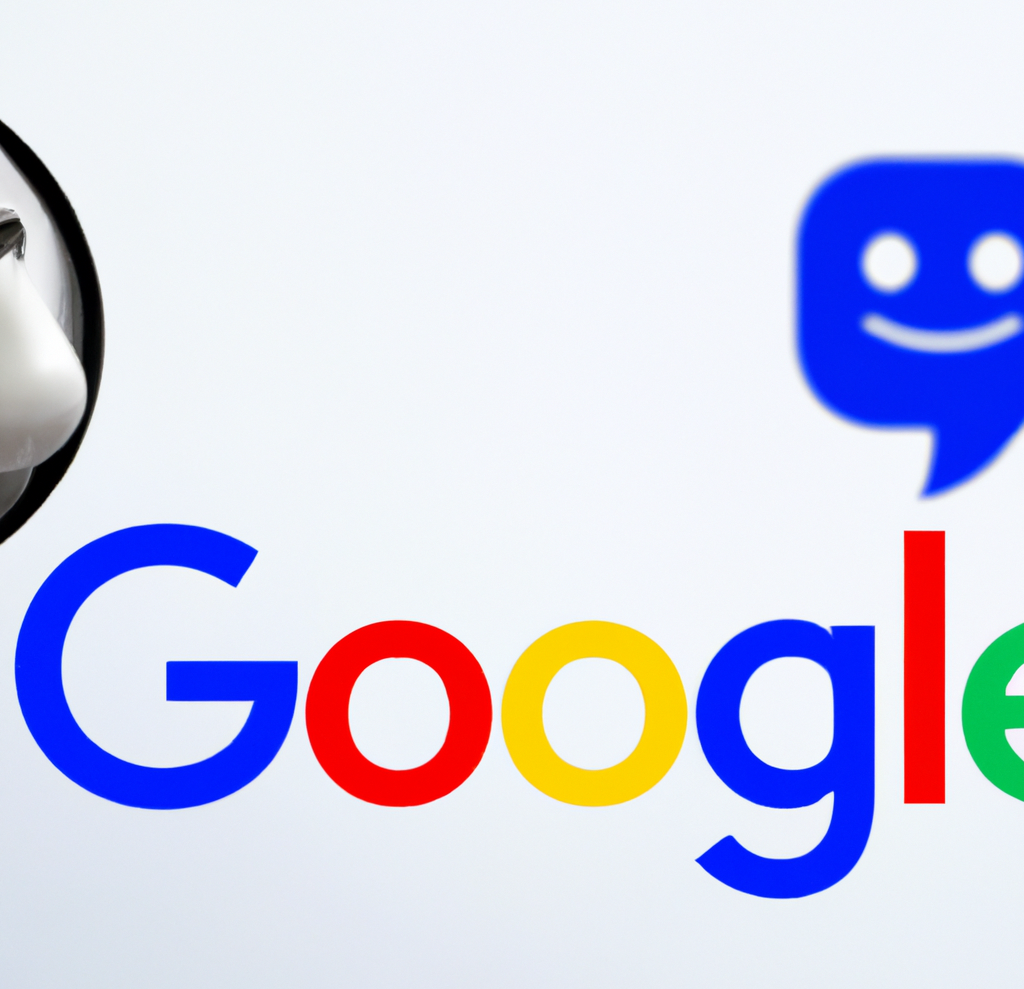
In an unexpected turn of events, Google has chosen to postpone the much-anticipated debut of its revolutionary generative AI model, Gemini. Initially poised to make waves this week, the unveiling has now been rescheduled for early next year, specifically in January.
Gemini is set to redefine the landscape of conversational AI, representing Google’s most potent endeavor in this domain to date. Positioned as a multimodal AI chatbot, Gemini boasts the capability to process diverse data types. This includes a unique proficiency in comprehending and generating text, images, and various content formats, even going so far as to create an entire website based on a combination of sketches and written descriptions.
Originally, Google had planned an elaborate series of launch events spanning California, New York, and Washington. Regrettably, these events have been canceled due to concerns about Gemini’s responsiveness to non-English prompts. According to anonymous sources cited by The Information, Google’s Chief Executive, Sundar Pichai, personally decided to postpone the launch, acknowledging the importance of global support as a key feature of Gemini’s capabilities.
Gemini is expected to surpass the renowned ChatGPT, powered by OpenAI’s GPT-4 model, and preliminary private tests have shown promising results. Fueled by significantly enhanced computing power, Gemini has outperformed GPT-4, particularly in FLOPS (Floating Point Operations Per Second), owing to its access to a multitude of high-end AI accelerators through the Google Cloud platform.
SemiAnalysis, a research firm affiliated with Substack Inc., expressed in an August blog post that Gemini appears poised to “blow OpenAI’s model out of the water.” The extensive compute power at Google’s disposal has evidently contributed to Gemini’s superior performance.
Google’s Vice President and Manager of Bard and Google Assistant, Sissie Hsiao, offered insights into Gemini’s capabilities, citing examples like generating novel images in response to specific requests, such as illustrating the steps to ice a three-layer cake.
While Google’s current generative AI offering, Bard, has showcased noteworthy accomplishments, it has struggled to achieve the same level of consumer awareness as ChatGPT. Gemini, with its unparalleled capabilities, is expected to be a game-changer, demonstrating impressive multimodal functionalities never seen before.
During the initial announcement at Google’s I/O developer conference in May, the company emphasized Gemini’s multimodal prowess and its developer-friendly nature. An application programming interface (API) is under development, allowing developers to seamlessly integrate Gemini into third-party applications.
As the world awaits the delayed unveiling of Gemini, the stakes are high, with Google aiming to revolutionize the AI landscape and solidify its position as a leader in generative artificial intelligence. The postponed launch only adds to the anticipation surrounding Gemini’s eventual debut in the coming year.
-

 PPC6 days ago
PPC6 days ago19 Best SEO Tools in 2024 (For Every Use Case)
-

 MARKETING7 days ago
MARKETING7 days agoEcommerce evolution: Blurring the lines between B2B and B2C
-
SEARCHENGINES5 days ago
Daily Search Forum Recap: April 19, 2024
-
SEARCHENGINES6 days ago
Daily Search Forum Recap: April 18, 2024
-

 WORDPRESS6 days ago
WORDPRESS6 days agoHow to Make $5000 of Passive Income Every Month in WordPress
-

 SEO7 days ago
SEO7 days ago2024 WordPress Vulnerability Report Shows Errors Sites Keep Making
-

 WORDPRESS6 days ago
WORDPRESS6 days ago10 Amazing WordPress Design Resouces – WordPress.com News
-

 SEO6 days ago
SEO6 days ago25 WordPress Alternatives Best For SEO



